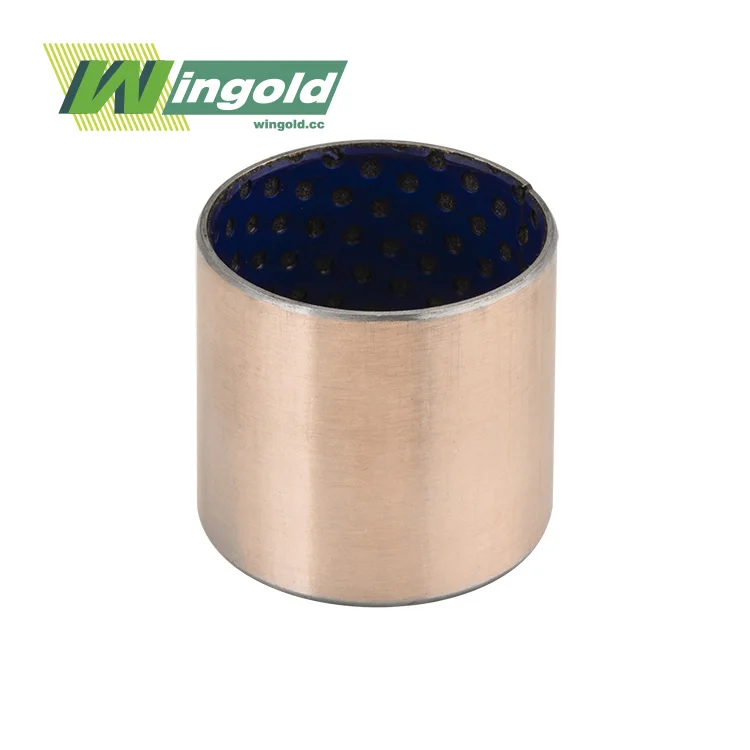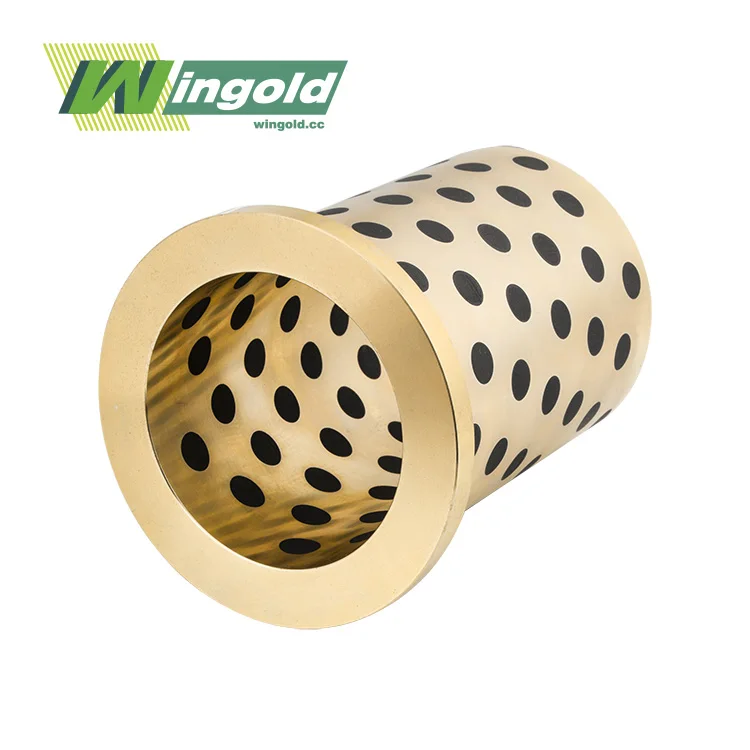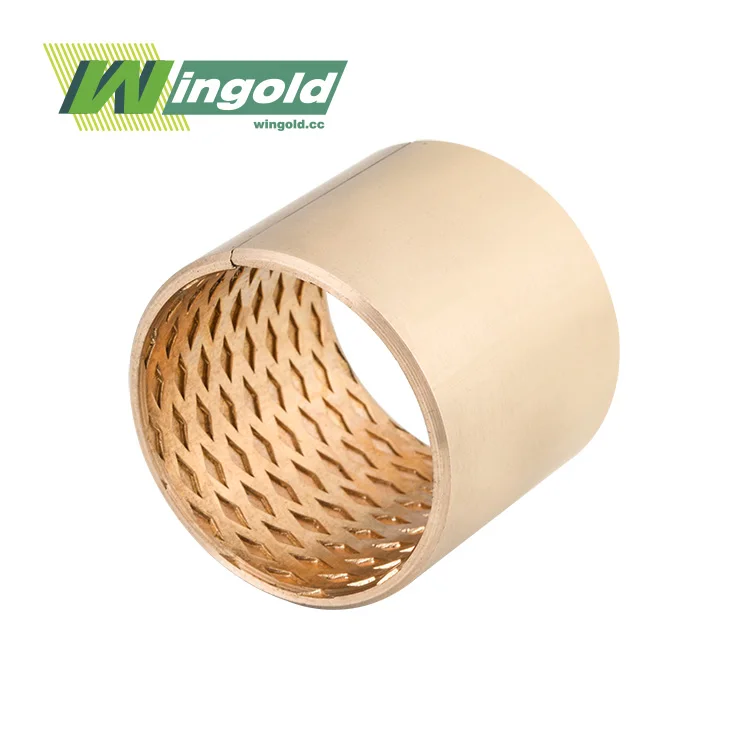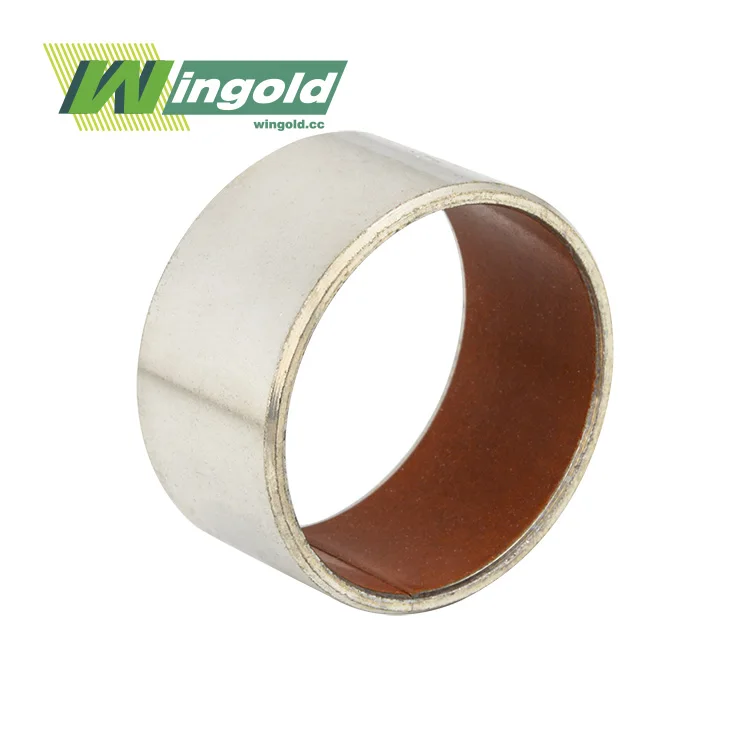Introducing the Composition and Structure of Bronze Oil Bushings
Material Composition: The Foundation of Performance
Bronze oil bushings are crafted from high-quality copper alloys, typically CuSn8P0.3 or CuSn6.5P0.1. These alloys offer an optimal balance of strength, wear resistance, and thermal conductivity. The addition of tin and phosphorus to the copper base enhances the bearing's mechanical properties and tribological performance.
The material composition contributes significantly to the bushing's durability and load-bearing capacity. With a hardness range of HB90-120 for standard applications and HB120-150 for hardened variants, these bushings can withstand substantial pressures up to 75N/mm². This robustness ensures reliable operation even in demanding industrial environments.
Structural Design: Optimizing Oil Retention and Distribution
The hallmark of bronze oil bushings lies in their unique structural design. The high-density copper alloy base is engineered with precisely formed oil indentations, which can be diamond-shaped or hemispherical. These indentations serve as microscopic reservoirs, holding lubricating oil and releasing it as needed during operation.
The porous architecture of the bushing is meticulously designed to achieve optimal oil retention and dispersion. This structure allows for continuous lubrication throughout the bearing's lifespan, significantly reducing wear and extending operational longevity. The intricate network of pores ensures that oil is evenly distributed across the bearing surface, maintaining a consistent lubricating film even under varying load conditions.
Working Principle: The Science Behind Self-Lubrication
Oil Impregnation Process: Setting the Stage for Performance
The self-lubricating capability of bronze oil bushings begins with the oil impregnation process. During manufacturing, the porous bronze structure is saturated with high-grade lubricating oil under vacuum conditions. This process ensures that the microscopic pores and oil indentations are thoroughly filled, creating a reservoir of lubricant within the bearing itself.
The choice of lubricant is crucial and is often tailored to the specific application requirements. Factors such as operating temperature, load conditions, and environmental factors are considered when selecting the appropriate oil. This meticulous approach ensures optimal performance across a wide temperature range, typically from -80°C to 200°C.
Dynamic Lubrication Mechanism: Friction Reduction in Action
The working principle of bronze oil bushings is based on a dynamic lubrication mechanism. As the shaft or mating surface moves against the bushing, it creates pressure that causes the oil to exude from the pores and indentations. This process forms a thin, continuous film of lubricant between the moving parts.
The oil film serves multiple functions:
- Reducing friction between the sliding surfaces
- Dissipating heat generated during operation
- Preventing direct metal-to-metal contact
- Cushioning against shock loads
As the pressure decreases, the porous structure reabsorbs excess oil, maintaining a consistent lubricant supply. This self-regulating mechanism ensures efficient lubrication throughout the bushing's operational life, resulting in a friction coefficient as low as 0.02 to 0.08.
Applications: Versatility Across Industries
Automotive and Transportation: Enhancing Vehicle Performance
In the automotive sector, bronze oil bushings find extensive use in various components:
- Suspension systems: Providing smooth, controlled movement in shock absorbers and struts
- Steering mechanisms: Ensuring precise and responsive steering control
- Engine components: Supporting camshafts and other rotating parts
- Transmission systems: Facilitating smooth gear shifts and reducing wear
The self-lubricating nature of these bushings contributes to improved fuel efficiency, reduced maintenance requirements, and enhanced overall vehicle performance. Their ability to operate in a wide temperature range makes them suitable for both everyday vehicles and high-performance racing applications.
Industrial Machinery: Powering Manufacturing and Processing
Bronze oil bushings play a crucial role in various industrial machinery applications:
- Hydraulic and pneumatic systems: Providing smooth operation in cylinders and valves
- Forging and pressing equipment: Withstanding high loads and temperatures
- Textile machinery: Ensuring precise and continuous operation in high-speed environments
- Food processing equipment: Offering hygienic, maintenance-free operation
- Printing presses: Supporting rollers and other moving components
The durability and low-maintenance characteristics of bronze oil bushings make them ideal for continuous operation in demanding industrial settings. Their ability to handle high loads (up to 140 MPa) and speeds (up to 2.5 m/s) ensures reliable performance in a wide range of manufacturing processes.
Specialized Applications: Meeting Unique Challenges
The versatility of bronze oil bushings extends to numerous specialized applications:
- Aerospace: Providing reliable operation in aircraft landing gear and control surfaces
- Marine equipment: Resisting corrosion in saltwater environments
- Agricultural machinery: Withstanding dust, dirt, and varying weather conditions
- Renewable energy systems: Supporting moving parts in wind turbines and solar tracking systems
- Medical equipment: Ensuring precise, hygienic operation in diagnostic and treatment devices
In these applications, the self-lubricating properties of bronze oil bushings offer significant advantages, including reduced maintenance requirements, extended equipment lifespan, and improved reliability in challenging operating conditions.
Conclusion
Bronze oil bushings represent a pinnacle of engineering ingenuity, offering a self-lubricating solution that enhances performance across a multitude of industries. Their unique composition, structural design, and working principle make them an indispensable component in modern machinery. As industries continue to demand higher efficiency, reliability, and durability from their equipment, bronze oil bushings stand ready to meet these challenges head-on.
At Wingold Bearing, we pride ourselves on delivering high-quality bronze oil bushings that meet the most exacting standards. Our commitment to innovation and customer satisfaction drives us to continually refine our products and processes. Whether you're seeking standard solutions or customized bearings for specialized applications, we're here to support your needs. For more information or to discuss your specific requirements, please don't hesitate to contact us at info@wingold.cc.
FAQ
How long do bronze oil bushings typically last?
The lifespan of bronze oil bushings varies depending on operating conditions, but they often outlast traditional bearings, with many lasting for the entire life of the equipment they're installed in.
Can bronze oil bushings be used in high-temperature applications?
Yes, bronze oil bushings can operate effectively in temperatures ranging from -80°C to 200°C, making them suitable for many high-temperature industrial applications.
Are bronze oil bushings environmentally friendly?
Bronze oil bushings are considered environmentally friendly as they require no external lubrication, reducing the need for ongoing maintenance and potential lubricant waste.




